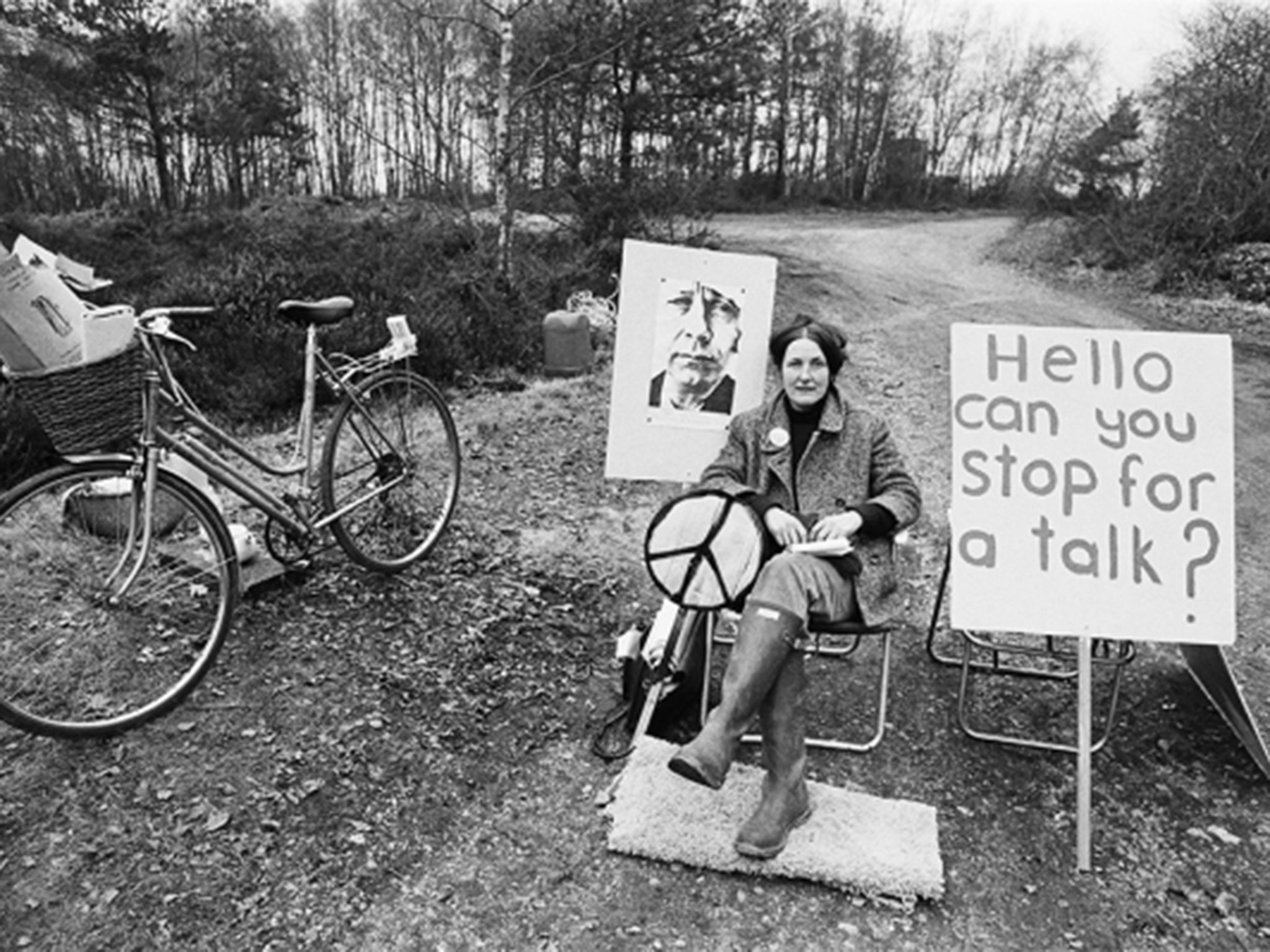Greenham Common peace camp: Remembering one of history's most famous feminist protests 35 years on
After one of the longest and most famous feminist protests in history, The Greenham Common Women's Peace Camp was dismantled in 2000. Ed Barber's new exhibition 'Peace Signs' shows the intimate access he gained

On a September morning in 1981, 36 women chained themselves to a fence at Greenham Common military base in Berkshire. They had marched from Cardiff with the idea of challenging a decision to site 96 Cruise nuclear missiles there, but with their request for debate ignored, they settled in for the duration.
What followed became a 19-year peace protest against nuclear weapons. The women set up camp and eventually it became their home.
Finally disbanded in 2000, the Greenham Common Women’s Peace Camp was one of the longest and most famous examples of feminist protest in recent history. The group’s imaginative demonstrations gained unprecedented media attention over the years – often from media platforms portraying the women as hysterical, aggressive meddlers – but one photographer was able to gain intimate access to the movement, and those pictures form part of his new exhibition, 'Peace Signs', at the Imperial War Museum in London.
“I was working freelance and shooting for the Campaign for Nuclear Disarmament,” says Barber, 35 years on. “A lot of my friends were peace activists. Making a documentary on the peace movement was my personal form of activism.”
As a “young and idealistic photographer with a strong social conscience”, Barber first set out to Greenham Common on assignment not long after it was established. Momentum and support for the anti-nuclear movement at that time was growing, but media interest seemed limited to large-scale London events. In documenting the women’s camp, Barber says he saw his work as a “preventative photography” – created in the hope that his images would help motivate people to get involved and protest against the “madness” of nuclear weapons.
One of the first people Barber met there was Helen John, the first full-time member of the protest group and – now in her seventies – still an active anti-nuclear campaigner. But, he says, “I was struck by the singularity of purpose and determination of everyone there. Living outside the main gate of the air base in a makeshift set of structures next to a major road and with winter approaching, it seemed like a hostile environment in which to set up camp and one that would require a huge network of support.”
As did he. The camp needed publicity from sympathetic photographers, and the Greenham women knew it was important that “a visual antidote” was required to combat the negative reporting. Thus, scenes such as camp member Fran De'Ath’s staged picket on the road leading to the missile construction site, were a gift to him. “‘Hello, can you stop for a talk?’ could be read as an innocent proposition,” he says, “but is really a sophisticated semiotic construct that includes a photocopied portrait of one of the USAF pilots involved in dropping the atomic bomb on Hiroshima.”
Barber formed bonds and was largely accepted as a friendly presence on the site. On one occasion, however, he received a very different response. In December 1982, Barber was at Greenham Common along with hordes of media clamouring for shots of the “Embrace the Base” demonstration – a performance of some 30,000 women linking hands to completely surround the nine-mile perimeter – and was surprised to be told by a steward that this was a “women only” space for the day.
“While I was politely explaining how I knew the place well and why it was vital for me to have access to this particular vantage point, a hardcore Fleet Street photographer, adorned with numerous cameras and long lenses, walked past. When the steward called out to him, he replied: 'Whatever, darling' and carried on towards the fence. Always a sensitive soul, I went off for a good cry.” But finding a spot at a respectful distance, Barber shot one of his most striking images to date.
The protest was effective in bringing the world’s attention to the debate. Nuclear convoys leaving the base were blockaded and missions disrupted, for which many of the women involved were taking to prison, and eventually the Cruise missiles were removed from Greenham Common.
While capturing moments of tension and great anxiety, Barber’s images are often playful, highlighting the creativity (costumes, a protestor with a paper bag on his head) and humour; something he says is integral to the portrayal of human emotion.
“One of my primary objectives was to capture people's reactions...when dealing with serious and potentially life-threatening issues,” he says. “I would like 'Peace Signs' to be seen as a celebration of people power and as a reminder of the importance of collective action and resistance. Thirty-five years on, we need to remember that weapons of mass destruction are still around. There are an estimated 15,800 worldwide today.”
'Peace Signs' by Ed Barber is at the Imperial War Museum from 26 May to 4 September
Subscribe to Independent Premium to bookmark this article
Want to bookmark your favourite articles and stories to read or reference later? Start your Independent Premium subscription today.

Join our commenting forum
Join thought-provoking conversations, follow other Independent readers and see their replies